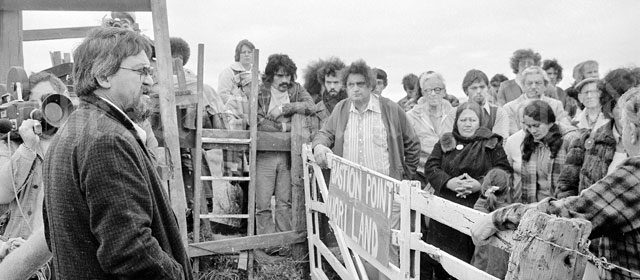Story summary
Common origins
Ngāti Whātua consist of four tribes whose lands stretch from the Hokianga down to Auckland. They share a common ancestor called Tuputupuwhenua or Tumutumuwhenua.
They also share a common ancestral canoe, Māhuhu-ki-te-rangi. Some say that the captain of the canoe, Rongomai, was drowned when the canoe capsized, then eaten by trevally fish. To this day, his descendants do not eat trevally.
Tribes
The four Ngāti Whātua tribes are:
- Te Roroa, whose name recalls a saying about the bravery of an ancestor, Manumanu II. His enemies said of him, ‘Te hei! Te roroa o te tangata, rite tonu ki te kahikatea!’ (Behold! That man is as tall as a white pine!) Te Roroa live in an area known for huge trees; the Waipoua kauri forest is in their territory.
- Te Uri-o-Hau and Te Taoū, from Kaipara Harbour. Both tribes are descended from Haumoewhārangi, who was killed in a dispute over kūmara (sweet potato) gardens.
- Ngāti Whātua-o-Ōrākei, which conquered the Auckland area in the 1740s. Their leader, Tūperiri, established a pā (fortified village) on One Tree Hill.
Warfare
In 1807 Ngāti Whātua defeated Ngāpuhi in battle at Moremonui. So many Ngāpuhi people were killed and left on the beach that the battle became known as Te Kai-a-te-karoro – ‘food for seagulls’.
However, in the 1820s Ngāti Whātua suffered heavy defeats.
European contact
Many Ngāti Whātua leaders signed the Treaty of Waitangi in 1840, but the tribes lost a large amount of land in the next half century. In Auckland, they were left only with land at Ōkahu Bay, and in 1951–52 their houses there were demolished.
Modern revival
In 1977–78 Joe Hawke led a protest against land losses in which a large number of people occupied Auckland’s Bastion Point (Takaparawhā). Although the protesters were evicted, the Waitangi Tribunal eventually supported their claims, and also those of Te Roroa. Te Uri-o-Hau and Ngāti Whātua-o-Ōrākei received compensation. Today, Ngāti Whātua play a prominent role in Auckland life, and in 2013, over 17,000 people claimed descent from Ngāti Whātua tribes.





